How To Protect Clear Coat Paint
With so many paint protection options on the market, and a bottomless barrel of competing product spin-offs to consider, finding the right surface protectant can feel like searching for a single LEGO brick in a box of billions.
Breaking it down to the basics, reveals four core surface protectant categories: Waxes, sealants, paint protection films, and nano ceramic coatings.
But what are the pros and cons associated with each of these products? Is there one kind of surface protectant that outperforms all others? How about price points versus projected longevity ratings? Does anyone offer a coating that can prevent rock chips?
It's time to cut through the marketing crap, skip all the pricing hype, and examine car paint protection products for what they truly offer. You might be surprised by what the four most popular forms of automotive surface protectants can and cannot do for your car.
Navigating the Automotive Surface Protection Maze

Contrary to common myth, auto detailing goes well beyond a dash of vacuuming action, some leather conditioning balm, and a fresh, cabin deodorizing air freshener swinging from the rearview mirror. Paint protection is a massive part of the detailing process, as it adds both a protective layer to the exterior of a vehicle, and enhanced shine to boot.
But nowadays there are protection products for every imaginable surface and material. Alloy wheels, interior trim, unpainted plastics, chrome, carbon fiber, headlights, glass, saggy truck nuts… the list of surface protectant options is bewilderingly lengthy.
In order to help keep things concise, today's topic will focus exclusively on exterior paint and clear coat oriented products. If you are looking for further reading on the art of cleaning and protecting the multitude of other parts that go into an automobile, feel free to head on over to the AvalonKing blog for further reading.
Key focus explained, we turn back toward the ultra thin layers of protection us humans prefer to slather upon our automobiles. The goal is simple: Keep natural, chemical, mechanical, accidental, intentional, and extraterrestrial damage from marring a vehicle's painted surfaces.
Yeah, you read that right. Extraterrestrial clear coat damage. For when a routine anal probe abduction requires beaming-up the whole damn car, and a fender gets accidentally clipped whilst being pulled aboard the mothership.
4 of the Most Common Forms of Car Paint Protection
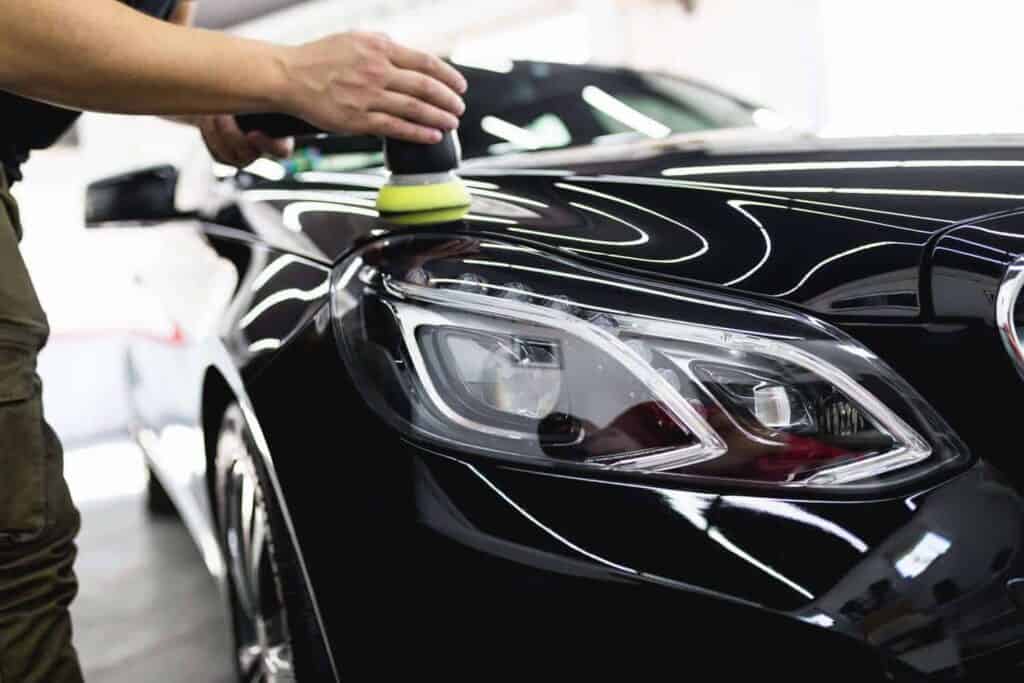
Regardless as to whether it's a daily driven beater, or a garage-kept collectible, when it comes to protecting a painted surface, finding the right balance for your busy life is just as important as preventing damage.
The most commonplace paint protection products begin with the old fashioned, yet still wildly popular tub of natural carnauba wax. From there it moves on to the lab-bred synthetic waxes and paint sealants, to the super hardcore stuff, like paint protection films and 9H-rated nano ceramic coatings.
But as you shall soon discover, each of these products comes with its own inherent pros and cons, which must be carefully weighed against the varying levels of protection and appearance perks that are offered.
Paint Protection Option #1: Car Wax

One of the oldest and most widely recognized forms of automotive paint protection, is plant-based carnauba wax. In recent years, this palm tree frond derived natural paste has been surpassed (at least in the protection department) by synthetic liquid formulations and hybridized blends betwixt the two.
Quick Nerd Note: Despite being confused for one another, car wax and car polish are two very different products. Automotive wax provides protection against things like UV ray exposure and helps repel rain water, as well as milder contaminants and smaller pieces of debris. Polish on the other hand, improves a clear coating's luster and shine, and is typically applied prior to a wax.
Car Wax Pros

Car wax provides car owners with several advantages, some of which are more useful than others. Here are a few of the more notable perks to using an all-natural carnauba or synthetic car wax.
- Super Simple to Apply: Most natural car waxes are sold as a paste wax, while synthetic versions are typically offered in a squeeze bottle. In order to be put to use, simply load an applicator pad or clean microfiber cloth with the product, and slather it across the surface, after which you can buff the area until it shines.
- Inexpensive: Car wax is one of the most affordable paint protection products on the market, especially when you consider that the typical can or bottle packs upwards of 10–20 applications.
- Long-term Storage Ready: Both natural and synthetic wax products have the ability to be stored for years on end without spoiling. Just be sure to properly affix the lid first.
- Plays Well With Polish and Paint Sealants: Car wax has the ability to seamlessly blend with polishes and synthetic paint sealant products. So playing alchemist, and mixing and matching on detailing day, is most definitely an option with this stuff.
- Solid UV Ray Protection: Carnauba wax is great at creating shine, and for developing a somewhat solid shell of protection that strengthens when exposed to the sun. This makes it a respectable UV ray deterrent, and a moderate hydrophobic repellent. Synthetic blends on the other hand, may not provide the same level of luster, but they do a slightly better job of protecting a clear coat against UV ray damage.
- Easy to Remove and Reapply: Car wax removal oftentimes requires little more than a splash of mild cutting compound, some elbow grease, and a little buffing wheel action.
Car Wax Cons
While there are a handful of benefits to using car wax, it's important to understand the shortcomings that are associated with it as well. After all, it is the mildest form of paint protection you can apply to an automobile.
- Super Short Lifespan: Car wax begins to wear thin as soon as it's applied. In most cases, this translates to about six weeks worth of protection and shine, after which removal and reapplication procedures must be implemented.
- Attracts and Traps Filth: While car wax does create a shell of protection, it's not very hard. Natural contaminants, like bug guts, tree sap, and pollen, as well as man-made filth, like road deicers and diesel exhaust soot, are forever eager to embed into car wax. Once ingrained, these contaminants become trapped in the wax's sticky structure, and slowly begin to damage the clear coat underneath.
- Not Very Chemical Resistant: Many common chemical cleaners, like engine degreasers and bug and tar removers, can be harmful to car wax. The same goes for winter deicing sprays, and things like isopropyl alcohol blends.
- Unimpressive Scratch Resistance Ratings: Ever heard of the the "Wolff-Wilborn" pencil hardness scale? This is how surface protectant hardness levels are determined, and quite frankly, both natural and synthetic car waxes always score at the very bottom.
Paint Protection Option #2: Paint Sealants
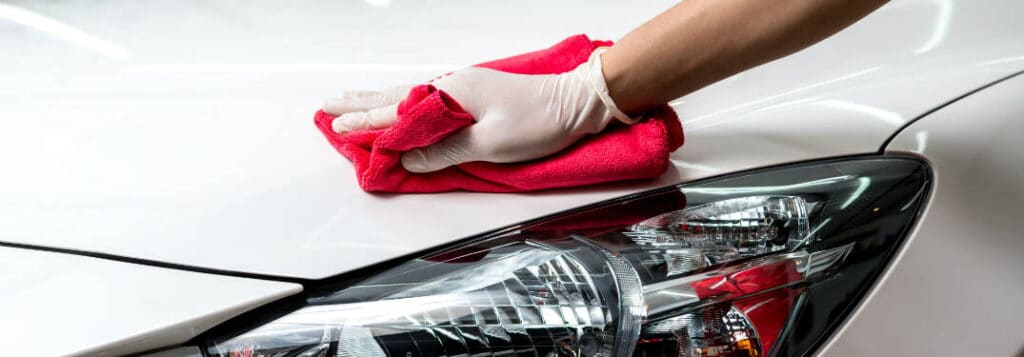
Synthetic paint sealant products are the modern man's car wax. Delivered via a squeeze bottle or a spray-on wax formula, and then allowed to harden, this lab engineered liquid forms a razor-thin layer of protection that is completely undetectable by the naked eye.
Stronger and more resistant to chemicals than natural waxes, paint sealants harbor the unique ability to adhere to both clear coatings and waxes. On average, the garden variety paint sealant has a lifespan that lasts anywhere from six months to a full year, at which point a full removal and reapplication must be conducted.
Paint Sealant Pros
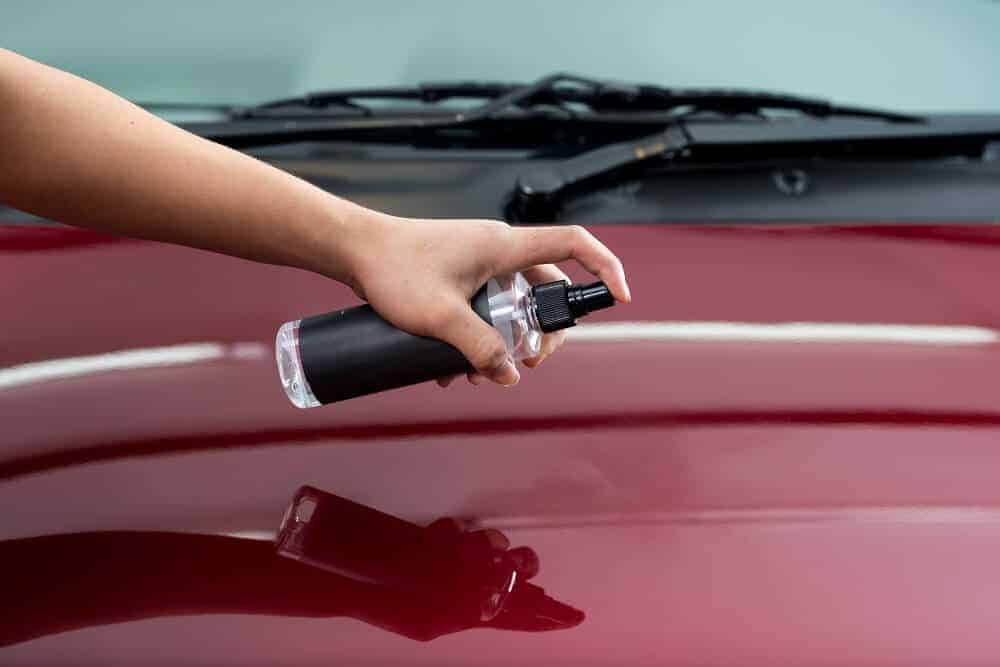
Paint sealants definitely have their perks. Here are a few reasons why certain people will opt to have them protect their vehicle's clear coat.
- Easy to Use: Paint sealant is applied in a similar manner to car wax. Simply slap a layer of this liquid product on an applicator or microfiber cloth, and rub it onto the paint. After that it's just a matter of buffing.
- Plays Well With Wax and Polish: As far as paint protection products go, sealants rule the roost when it comes to playing well with car waxes and polishes. You can combine a paint sealant with virtually any kind wax or polish on the market to create your own custom blended wax/polish/paint sealant cocktail.
- Super Glassy Results: When properly applied and buffed, paint sealant products have the ability to enhance the luster of paint, producing an ultra glassy looking finish.
- Respectable Lifespan: Considering that the average car wax only lasts around six weeks, the 6–12 months of protection provided by a paint sealant creates an obvious improvement in longevity.
Paint Sealant Cons
Although paint sealants last longer than traditional waxes, and create a super glassy appearance, they also come with their own unique issues.
- Emphasizes Paint Imperfections: The glassy appearance provided by paint sealants is quite the double-sided sword, as it highlights all of the blemishes, scratches, swirl marks, and rock chips in clear coat and paint.
- Requires Extensive Prep Work: In order for a paint sealant to harden properly atop a clear coat, an extensive amount of prep work must first be made. In most instances, this translates to clay media decontamination and paint correction procedures, followed by loads of surface buffing.
- Removal Sucks: While prep shampoo products are customarily all that's required in order to strip away waxes, these soaps are intended to remove aging protectants that have begun to break down. Paint sealants are far more resilient, and therefore their removal often requires the use of specialized chemicals and multiple decontamination washes.
- Mediocre Protection Levels: Paint sealants may be a step above traditional car wax in the protection department, but they are not nearly as tough or long-lasting as the following two paint protection products on today's list.
Paint Protection Option #3: Nano Ceramic Coatings
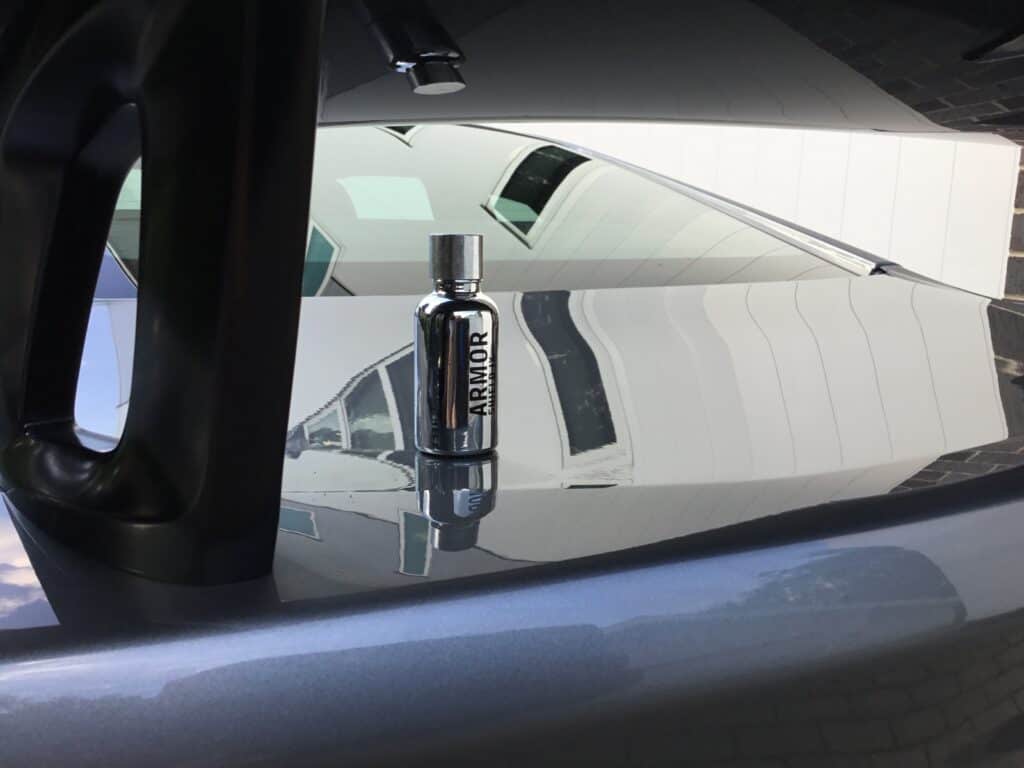
The best way to describe a nano ceramic coating, is to focus on its ingredients. A quartz crystal-enriched chemical formula, that has been enhanced with hardeners and brightening agents.
As this ultra thin, yet insanely strong shell seeps into all of the invisible pores and blemishes spread across a vehicle's clear coat, it fills in these imperfections, leaving behind an incredibly slick surface area.
Once cured atop a painted or clear coated surface, these ingredients turn completely invisible, repelling everything from acid rain and bird droppings, to coffee spills, tree sap, UV rays, graffiti-inspired vandalism, and more.
Ceramic Coating Pros

The pros associated with nano ceramic coatings are pretty substantial. Here are a few of the top contenders.
- Exceptional Durability: While wax only offers about six weeks of protection, and paint sealants begin to fade after 6–12 months, high-quality nano ceramic coatings will last anywhere from 2–5 years if properly installed and maintained.
- Impressive Chemical Resistance Ratings: A ceramic coating gets its strength primarily from quartz nanoparticles, along with a handful of other shine and strength bolstering minerals. Once applied and allowed to fully cure, ceramic coatings become resistant to many of the chemicals that chew-up traditional car waxes and paint sealants.
- Superior Scratch Resistance Levels: While they may not be 100% "scratch-proof," 9H-rated nano ceramic coatings offer excellent scratch resistance ratings, and can take way more abuse than one might expect from such a thin layer of protection.
- Standalone Protection: When it comes to ceramic coating installation, there is zero need for the use of additional chemicals or specialized finishing tools.
- Hydrophobic Properties: The term "hydrophobic" pertains to surfaces that actively repel liquids and dry forms of contamination. That means that anything that touches the super smooth layer that is a nano ceramic coating, either slides right off the surface, or hovers atop it.
- Rich Gloss and Shine: The glassy, silica (SiO2) quartz crystal compounds found within a nano ceramic coating, along with a handful of other components contained therein, bring a brilliant shine and deep gloss levels to hard surfaces.
Ceramic Coating Cons
While ceramic coatings are amazing products, they are far from being perfect. Here are a few things to consider before investing in a nano ceramic coating.
- Substantial Prep Work is Required: Depending upon the condition of the surface(s) you plan on ceramic coating, some substantial levels of prep work may need to be put into play prior to application. For more on this, be sure to check out our blog article about proper ceramic coating prep steps.
- Highlights Paint Imperfections: There's a reason why you want to properly prep, and maybe even complete some paint correction procedures prior to installing a nano ceramic coating. Due to their transparent nature and depth-inducing characteristics, these products amplify whatever surface they coat, including paint imperfections.
- Tough to Remove: Ceramic coatings are super strong, especially in 9H-rated trim. Therefore, removal typically requires the use of a polishing tool, cutting compounds, clay media, and a significant investment of time and energy.
- Slightly Pricey: Regardless as to whether you contract the job out to a professional ceramic coating shop, or opt for the DIY approach, the cost of a ceramic coating application is always higher than a paint sealant or classic car wax. On the upside, at least you don't have to install the stuff nearly as often…
- Sub-par Options Abound: There are numerous ceramic coating products on the market that are little more than snake oil in a bottle. Do your research, verify that a product is indeed of high-quality, and always look for ceramic coatings that come with warrantees of 2+ years.
Quick Tip: Ceramic coating sprays typically only last for a few days before losing their zip. While these products can be used as a stand-alone solution, they work best when used as a rejuvenating topper/booster for previously installed ceramic coatings.
Paint Protection Option #4: Paint Protection Film (PPF)

Paint protection film (PPF), resides within the upper echelon of paint protection products, and despite appearing all the world like a clear vinyl wrap, offers some really unique surface shielding capabilities.
These ultra-thin polyurethane films become both fully transparent and extremely strong once installed and allowed to firm-up. Due to its resistance to things like rock chips and scratches, PPF is most commonly found wrapped around front bumpers, across hoods, over side-view mirrors, and on areas like headlights and other forward facing exterior components.
PPF Pros
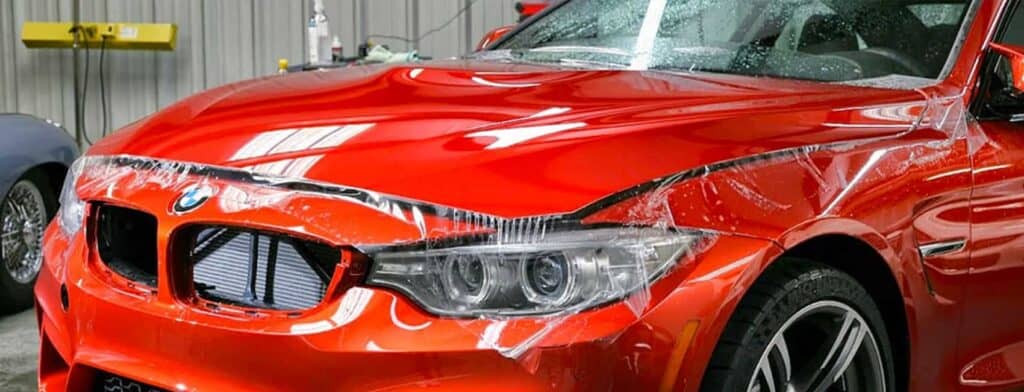
Paint protection film can be a pain in the patella to work with, and so installation is best be left to professional detailers and automotive vinyl install experts. However, once applied and properly maintained, PPF offers consumers quite a few benefits that nothing else on the market can best.
- Rock Chip Repelling Rock Star: If you're looking for the best way to protect your vehicle against small rock chips, opt for PPF. It won't guarantee that a rock chip still won't occur, but it sure as hell will lessen the chances of it happening.
- Unique Self-Healing Properties: PPF is quite similar to thermoplastic polyurethane (TPU), so when it does receive a small scratch, a light buffing without any polishing compound is all that's needed in order to heat the film to the point where it can heal itself.
- Virtually Scratch-Proof: If you're looking for the best way to protect a car against mild surface scratches, like car wash mishaps, flying debris, and natural airborne contaminants, PPF's multi-layered construction is the clear option.
- Lengthy Longevity: Top-shelf PPF products have the ability to protect a vehicle for up to 10 years on average, with advancements in the field boasting that future generations of the product will last even longer.
PPF Cons
Despite being the reigning champ amongst all modern day paint protection products, PPF does pack a few caveats that should be taken into consideration.
- Super Expensive: Out of all of the modern paint protection products on the market, PPF is hands-down the priciest. This is partially due to the fact that PPF is extremely tricky to apply, and that for larger sections (like bumpers and hoods), the assistance of multiple trained installers must be implemented. So don't be surprised if that PPF install quote you requested comes back with a $6,000 price point.
- Not Very Hydrophobic: PPF does a damn good job at protecting surfaces, but it is not nearly as good at repelling water and dirt as a nano ceramic coating. This explains why many people install ceramic coatings on top of their PPF for additional cleanliness and durability.
- Labor Intensive Upkeep: While you won't need to routinely remove and reapply PPF, you will need to wash the vehicle more often, as it is prone to absorbing contaminants and debris.
- Damage Requires Replacement: If the PPF is damaged due to a minor fender-bender, vandalism, or some other reason, you will need to replace the entire section that has been damaged.
- Discoloration Woes: Over time, lesser grades of PPF will begin to discolor, especially when exposed to things like UV light, road grime, and pollution over a prolonged period of time. This is why show cars, garage queens, and valuable vintage automobiles tend to be the most commonly covered.
Parting Shots
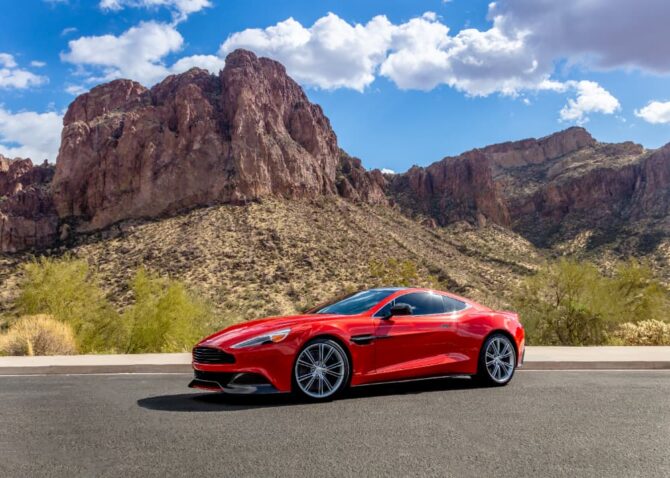
Picking the right paint protection product boils down to what level of protection you are after as a vehicle owner, with the rest being more about "dollars and sense" than detailing and durability.
Car wax may be cheap and easy, but it requires substantial amounts of time and sweat equity, especially since you must repeatedly remove and reapply it every six weeks or so. The same can be said for paint sealants, except that it's every six months, and the labor involved is even more intensive and expensive.
And despite all of its protective prowess, the staggeringly high price point associated with the average PPF install keeps it well out of reach of the average car owner. It also requires complete removal and reinstallation if damaged, so forget about making a quick spot fix with this stuff.
This leaves us with nano ceramic coatings. A product hovering somewhere betwixt all of the above, thus creating what many professional detailers and DIY enthusiasts alike feel is the most balanced paint protection solution.
So take your time, read as many customer and professional installer reviews as you can, and then compare one product within a specific category against another. Also, be sure that you are 100% comfortable with not only the required prep and installation work, but the upkeep as well.
We'll be here if you need us, so reach out any time, regardless as to what product you decide is best for you and your ride.
If you enjoyed this article, then you'll love AvalonKing's automotive care products for Do-It-Yourselfers. We create "No B.S. products" for an affordable price. And the best part, we treat our customers like family, so if you have any questions or just looking to chat about cars, we're only an email or call away. Check out our homepage here.
How To Protect Clear Coat Paint
Source: https://avalonking.com/blog/how-to-protect-your-car-paint/
Posted by: goldmanyouss1951.blogspot.com

0 Response to "How To Protect Clear Coat Paint"
Post a Comment